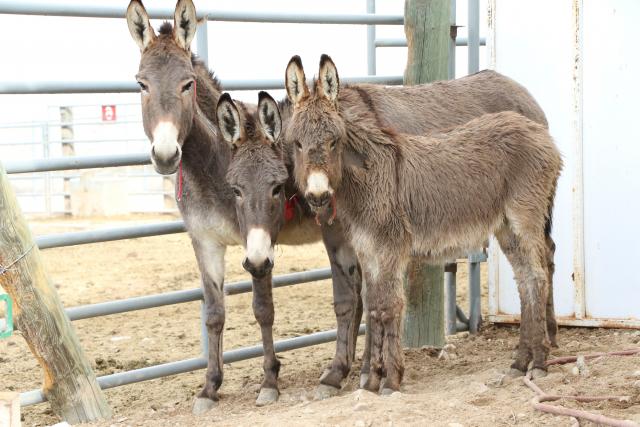Wild horses, trainers united this weekend
Organization:
BLM Office:
Media Contact:
BOISE, Idaho – Ninety wild horses and 27 wild burros were adopted and picked up over the weekend by approved trainers readying for the fifth annual Mustang Mania Trainer Incentive Program (TIP) Challenge. The Challenge is slated to take place July 2-4, 2021, at the Ford Idaho Horse Park in Nampa.
This weekend’s pickup launches the journey for horses, burros and handlers to prepare for this summer’s competition. The 91 trainers participating hail from Idaho, Montana, Nevada, Oregon, Utah and Washington. In keeping with the heart of competition, many of the trainers adopted multiple animals, significantly increasing their training time commitment.
The TIP Challenge is a segment of the Mustang Heritage Foundation’s Trainer Incentive Program. The mission of the Mustang Heritage Foundation is to increase the adoption of BLM-housed American Mustangs and burros through innovative gentling (training) competitions and awareness programs. In keeping with this mission, the TIP Challenge was created to place mustangs and burros in adoptive homes. These challenges involve youth (8-17 years of age) and adults (ages 18 and up) in the adoption and training of mustangs and burros. Participants help promote the adoption of these national treasures by showcasing their value and trainability through in-hand competition.
Extreme Mustang Makeover and TIP trainers Matt and Stacie Zimmerman of Caldwell are hosting the Mustang Mania TIP Challenge. The Zimmermans have helped close to 500 wild horses find good homes. They also host a storefront wild horse training business in partnership with the Mustang Heritage Foundation and the BLM that continues to place trained mustangs into private care.
-BLM-
The BLM manages more than 245 million acres of public land located primarily in 12 western states, including Alaska, on behalf of the American people. The BLM also administers 700 million acres of sub-surface mineral estate throughout the nation. Our mission is to sustain the health, diversity, and productivity of America’s public lands for the use and enjoyment of present and future generations.

